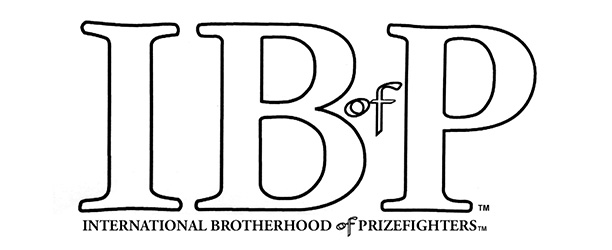Articles of 2009
The Kimball Chronicles: BWAA Awards, De-Mystified

Vince Lombardi never won a Vince Lombardi Trophy, so I guess you’d have to say the Boxing Writers Association of America went one-up in 1995, when A.J. Liebling was named the winner of an A.J. Liebling Award.
Liebling, Nat Fleischer, and Barney Nagler were all boxing writers, and Sam Taub was a boxing broadcaster, which makes them somewhat unique among the names attached to the various awards the BWAA dispenses at its annual banquet, but as one might have anticipated in a process that has evolved over 85 years, others sometimes seem to defy rhyme and reason. At the 2009 edition of the awards dinner, held earlier this month at the Capitale on the Bowery, there were 14 recipients of awards named for ten different people (and this doesn’t even count the Barneys, which by definition have multiple categories), and this much I’ll flat-out guarantee you: Among an active membership of nearly 150, there aren’t ten boxing writers in the country who could tell you who they all are, much less how they got their names attached to the hardware handed out that night.
Edward J. Neil, for whom the ‘Fighter of the Year’ award is named, wasn’t a boxer but a newspaperman. Al Buck, at least as far as we know, never managed a boxer, John F.X. Condon never trained one, and Harry Markson was never in a Fight of the Year.
The etiology of the BWAA Awards is sort of a patchwork quilt of names. Some of these honor deceased members, while the provenance of others reflects the organization’s New York-dominated origins, a throwback to an era when Madison Square Garden exerted a disproportionate influence on the sport, often with the connivance of influential politicians of the age. More recently-contrived honors seem to have been cooked up on the spur of the moment, sometimes without much deliberation or reflection.
Some thought it ungrateful that I referred to a couple of these ambiguities in my remarks at the June 12 Capitale dinner. In introducing Trainer of the Year Freddie Roach, for instance, I mentioned that some BWAA awards “are named for crooked politicians and boxing officials of dubious character,” and in accepting the Bill Crawford Award “for courage,” I noted that both co-winner Genaro Hernandez and I found it somewhat embarrassing to be compared to a Medal of Honor recipient. Neither point was disrespectful in intent; they were made merely to note the disparate contexts underlying some of these honors.
Edward J. Neil was an AP sportswriter and early BWAA member who had already been nominated for a Pulitzer Prize when he was killed in action on January 2, 1938 while serving as a war correspondent covering the Spanish Civil War. An award honoring his name was immediately established and presented that year. Although it has evolved into the Fighter of the Year Award (Manny Pacquiao won it for the second time this year) the first Neil Trophy was awarded to Jack Dempsey, who hadn’t fought in a dozen years. Six years later the winner of the Neil Trophy was James J. Walker.
In terms of longevity, the award named for Walker ranks second only to the Neil Trophy. Established in 1940, it is supposed to be for “Long and Meritorious Service” to boxing, although the service of its namesake was neither long nor particularly meritorious.
Credited with bringing boxing back to New York in a legalized state, Walker served as mayor of New York from 1925-1932, presiding over prohibition-era corruption through two scandal-filled administrations, the second of which was interrupted when he had to lam it out of town one step ahead of a grand jury. Walker’s online biography notes that “facing pressure from Governor [and president-in-waiting] Franklin Delano Roosevelt, Walker resigned from office on September 1, 1932, and promptly left for Europe until the danger of criminal prosecution appeared remote.”
Although it is the coveted prize with which we honor our own, the BWAA didn’t establish the Nat Fleischer Award for Excellence in Boxing Journalism until 1972, the year of Fleischer’s death, when longtime president Barney Nagler became the first recipient.
An historical figure of undeniable importance, Fleischer might not have been a wordsmith on a par with Joe Liebling (or for that matter, of Barney Nagler), but his influence over the sport was profound. He had founded The Ring magazine in 1922, and in that role served as the sport’s conscience for half a century. Fleischer is also credited with establishing The Ring’s ratings in 1925. While these appeared under the magazine’s aegis, they were initially formulated by Tex Rickard, the promoter of boxing for Madison Square Garden. After a few years it was recognized that having a promoter involved with what purported to be unbiased ratings might appear to be a conflict of interest and Fleischer severed the relationship in 1929, leaving the “Bible of Boxing” to operate without influence from a promoter for nearly 80 years.
Unlike the other awards, which are voted on by the membership at large, the Fleischer is determined by a vote of living previous recipients. Nagler, the initial winner, was followed by Dave Anderson (one of three Fleischer winners to also win a Pulitzer Prize) in 1973. The third year AP boxing scribes Jack Hand and Murray Rose shared the Fleischer. I’ve always wondered: Does this mean Dave voted for one and Barney for the other?)
A bridge between the BWAA’s origins and its present, Nagler served three terms as BWAA president between 1959 and 1989, and often served as its conscience as well. His 1964 book James A. Norris and the Decline of Boxing fairly eviscerated the longtime relationship between the Mob and the sport (and the Garden in particular), and, it should be noted, Barney didn’t exactly spare the feelings of several figures for whom BWAA awards are named.
Nagler was further honored in this century with the establishment of “The Barneys,” which annually honor the best boxing writing in several categories, chosen after a blind reading by an independent panel of rotating judges. The Barneys could as easily be known as “The Bernies,” since the project was created and brought to fruition by former BWAA president Bernard Fernadez, who has tirelessly nurtured the contest for nearly a decade.
Although Al Buck’s end came in circumstances slightly less heroic than Eddie Neil’s, the decision to name the Manager of the Year award for a departed comrade was a nice touch, or so it seemed in 1967. The BWAA’s president from 1942-47, Buck covered boxing for both the New York Post and for The Ring. His name comes up as a training camp traveling companion in a couple of Liebling’s pieces in The Sweet Science, but my favorite Al Buck story is one exhumed by Vic Ziegel several years ago in describing the essential function of Mushky Jackson (real name: Morris Ladisky), a jack-of-all-trades utility player at the Garden Boxing Department:
“One night, the Garden was a heavyweight short for a four-round fight and Mushky was sent on a scouting mission. ‘He was a man who could provide such services,’ remembers Barney Nagler, the splendid columnist for The Racing Form. Mushky’s first stop was the Brass Rail Restaurant at Seventh Ave. and 49th St. He was walking past the doorman when he realized the uniform seemed to be just the size he needed.”
Later that night, after he had filed his story, Al Buck accompanied Mushky to the Brass Rail, where the boxing press was convening. As the doorman opened the cab door, Buck glanced at him and said “Don’t I know you from somewhere?”
“A remarkable bit of recall,” wrote Ziegel of Buck, “since the doorman was counted out just a few seconds after the referee’s instructions.”
Gil Clancy, Angelo Dundee, and Yank Durham won the first three Buck Awards, but this was an era in which a boxer’s manager was usually also his trainer and chief second in the corner. By the late 80s those roles had evolved considerably and it was decided to spin off a separate award for Trainer of the Year.
Initially this was named for Condon, a longtime Garden functionary whose roles over the years progressed from public address announcer to head of the publicity department to vice president and, eventually, president of MSG Boxing. Georgie Benton, who trained several champions but managed none, won the first two Condon Awards, and Eddie Futch won the next two. Eventually the decision was made to add his name to what is now called the Futch-Condon Award.
Since Eddie Futch had won two Manager of the Year awards even before his back-to-back wins as Trainer of the Year, it seemed appropriate to add his name to the trophy, and his widow, Eva Futch, joined me in presenting the Futch-Condon Award to Freddie Roach at the Capitale.
It was the third time in five years that Freddie had won the award, and I noted only half-whimsically that night that if the present trend continues we might eventually have to add his name to the trophy alongside Eddie’s.
“Wouldn’t it be wonderful,” I asked at that night’s dinner, “if at some time in the distant future Floyd Senior actually was elected Trainer of the Year and had to come to New York to receive the Eddie Futch-Freddie Roach Award?”
The prestige of the Futch-Condon Award seems to grow with each year, and while you might not describe the Buck Award as a casualty of that process, the modern-day definition of a manager bears scant resemblance to the role played by the likes of Joe Gould and Knobby Walsh. In the past five years, the Buck Award has twice gone to self-managed boxers (Bernard Hopkins in 2004 and Joe Calzaghe this year). On another occasion, in 2006, the BWAA membership decided there was no candidate worthy of the Al Buck Award.
An award for “Honesty and Integrity” in boxing might seem an oxymoron of the first order, but the BWAA established one 22 years ago, and has been periodically handing out the James A. Farley Award ever since. There have actually been two New York State Athletic Commission chairmen of that name, father and son, but creating the award seemed particularly curious in 1977, since less than a year earlier the Farley name had been associated with most significant scandal to visit boxing over the second half of the 20th century.
Better known as FDR’s Postmaster General (the Post Office across the street from today’s Garden also bears his name), the first James Farley was a well-entrenched Tammany politician who served as Chairman of the Democratic National Committee, and was appointed by Gov. Al Smith to head up the NYSAC, which he oversaw from 1925-1933.
His son and namesake followed in his footsteps as commission chairman in the mid-1970s. In 1976 Farley fils lent out the family name to, and agreed to supervise Don King’s so-called US Boxing Championships, a crooked exercise involving kickbacks, falsified ratings, and fixed fights that eventually brought down The Ring magazine, several ABC executives, and a handful of previously respected sportswriters. Farley, who had ostensibly been brought on board to “certify the integrity” of the scheme, was found to have accepted kickbacks in the form of expense money from King, and was forced to resign in disgrace by then-Gov. Hugh Carey.
Harry Markson was the recipient of the inaugural Farley Award. The scholarly Markson, the uncle of novelist David Markson, had been a Garden fixture since 1948. With Congress beginning to take interest in the profound influence the Mob was exerting on the sport, IBC kingpin James Norris personally installed Markson as Director of Boxing, with the explanation “There’s got to be somebody around here with clean hands.”
That might explain how Harry Markson’s name came to on the first Farley Award, but how and why the BWAA decided to name its Fight of the Year Award for him isn’t quite as clear. Markson had died in 1998. Four years later the organization decided to honor Micky Ward and Arturo Gatti, and has been handing out Markson Awards ever since.
Having already honored excellence in journalism for a decade, the BWAA created a category for broadcasters in 1982, and named the award for Sam Taub, a pioneer announcer. Don Dunphy was the first recipient of the Sam Taub Award, although it seems that Sam Taub could just as easily have been the first recipient of the Don Dunphy Award.
Established in 1996, the Marvin Kohn Good Guy Award is self-evidentiary, and honors another longtime fixture from the Garden’s Boxing Department. The first two honorees were LeRoy Neiman and Don Dunphy. That the third was George Foreman would probably have surprised BWAA old-timers whose introduction to Big George had come in his first incarnation as heavyweight champion more than a quarter-century earlier. In his comeback phase Foreman became one of the sport’s more beloved figures, but if you’d asked them back in 1973, Dick Young and Red Smith would probably have told you Marvin Kohn had a better chance of being named Fighter of the Year than George Foreman did of ever being honored as a “good guy” by boxing writers.
Although the Fleischer Award is by definition for “Excellence in Boxing Journalism,” it has come to honor a lifetime body of work by a still-active fight scribe. Two decades on it occurred to the membership that the process virtually ignored the artistry of many of their more distinguished predecessors.
The decision to name the award after A.J. Liebling, the greatest boxing writer ever to put pen to paper, was an easy one, and the first class of Liebling winners, in 1995, comprised half a dozen names, including that of Liebling himself, Budd Schulberg, and W.C. Heinz.
Its initial definition described the Liebling Award as, simply, “for Outstanding Boxing Writing,” but in subsequent years the focus seemed to wander. Although there were many deserving winners, Liebling Awards were handed out to newspaper editors, a photographer, a cartoonist, and in some cases the Liebling became sort of a de facto makeup call, a consolation prize for those who might have been considered for the Fleischer but who were clearly never going to muster enough votes to win one.
Edwin Pope and William Nack had won Lieblings in 2004, but the category lay dormant until this year, when new BWAA president Jack Hirsch, determined to restore the award to its original aspirations, appointed a committee consisting of five Fleischer winners — myself, John Schulian, Dave Anderson, Bernard Fernandez, and Ed Schuyler — to select the latest group of honorees. The three men we came up with – Leonard Gardner, Larry Merchant, and the late John Lardner – represent the most formidable trio of winners since Liebling-Schulberg-Heinz in ’95, and some of the near-misses eliminated in our democratic process promise an equally impressive selection of winners next year.
In what turned out to be a nice touch, Pete Hamill, who edited the just-published edition of Liebling’s The Sweet Science and Other Writings, presented this year’s awards to Gardner, Merchant, and John Lardner’s daughter Susan.
The most recently established BWAA award is only four years old, but already has a history of controversy. Following the death of longtime Sports Illustrated boxing writer Pat Putnam, it was decided to honor his name with the creation of the Pat Putnam Award for Perseverance. Kassim Ouma was the first recipient in 2005, and Muhammad Ali the second a year later. Anthony and Lamont Peterson had already been selected to win the Putnam award for 2007 when the crap hit the fan.
Having read a column by Bernard Fernandez describing Putnam’s exploits as a Korean War Marine and ex-POW, a couple named Charles and Mary Schantag, who operate one of those fly-by-night Swift Boat organizations out of their living room in Missouri, contacted the then-BWAA president with information that Fernandez’ account was (in Bernard’s own words) “totally bogus,” and that Putnam had never been either a Marine or a POW.
Acting in what still seems to have been indecent haste, the BWAA stripped Putnam’s name from the 2007 award given the Peterson Twins.
There is no disputing that Pat repeated his fanciful account in barroom conversations, but, as I wrote at the time, “he never attempted to make them part of his official resume. They were never a consideration in helping get him a job. They weren’t included in his official biographies at the Miami Herald, at Sports Illustrated, or at TheSweetScience.com, for which he wrote following his retirement from SI. He never publicly represented himself as either a veteran or a POW. He never attempted to join groups representing either. He never applied for veterans’ benefits, he didn’t ask to be buried with military honors, and he certainly didn’t ask the BWAA to label him a war hero or to name an award after him.
“In short,” I concluded, “if Putnam is going to be posthumously convicted of anything, it should be of slinging bullshit in a bar. If that were a hanging offense, we’d all be in trouble.”
The point being that Putnam, one of the more distinguished boxing writers of his generation, was brought into disrepute not because of anything he wrote, but by what others had, without checking their facts, represented as factual. And in many cases these were the same journalists who couldn’t wait to strip his name from the award.
In what must by any standard be described as a massive overreaction, the Putnam Award for Perseverance was renamed the Bill Crawford Award for Courage. It is now named for a recipient of the Congressional Medal of Honor, and – whether to appease the Swift Boat folks or to cover their embarrassment over their own slipshod journalistic practices – the BWAA also enacted a bylaw requiring that the Crawford Award also be presented by a former Medal of Honor winner.
I was frankly uncomfortable about this at the time, and even more so this spring when it was announced that Genaro Hernandez and I would share this year’s Crawford Award, and that it would be presented by a MofH recipient.
After all, Bill Crawford and Captain Thomas J. Hudner Jr, who presented the awards at the Capitale, had come by their honors by consciously risking their own lives. While Genaro and I had both been diagnosed with cancer, we had no choice in the matter. It struck me not only as inappropriate, but downright disrespectful, to compare our status with that of bona fide war heroes, and when Genaro and I discussed it before the dinner, he agreed.
“All we can do is the best we can to live from one day to the next,” said Hernandez.
So in my speech that night, after a nod to Pat Putnam, I noted that discomfort, pointing out that while “Courage” was represented by Capt. Hudner (and by Bill Crawford), the original definition of the award –“perseverance” – might have been more appropriately applied to me and Hernandez.
“Perseverance is just another word for stubbornness,” I said. “And Genaro and I are certainly stubborn.”
For better or for worse, that’s what I said that night, anyway, and if someone misinterpreted it, then they may not have been paying attention. It seemed clear enough to me that Captain Hudner understood the point I was making.
That was all predicated on the official description of “The Bill Crawford Award for Courage,” by the way. It wasn’t until we got home and unpacked the trophy from its box that my daughter pointed out that the engraving on the bowl didn’t say “courage,” but “perseverance.”
And I’m not giving it back.
Articles of 2009
UFC 108 Rashad Evans vs. Thiago Silva

Former champion Rashad Evans meets Brazil’s venerable Thiago Silva in a non-title belt that can lead to a return match with the current champ, but first things first.
Evans (15-1-1) and Silva (14-1) meet in Ultimate Fighting Championship 108 in a light heavyweight bout on Saturday Jan. 2, at the MGM Grand Hotel and Casino in Las Vegas. A win by either fighter could result in a world title bid. The fight card is being shown on pay-per-view television.
Events can change quickly in the Octagon and anybody can beat anybody in the 205-pound weight division. Just ask Silva or Evans.
Silva and Evans are both experienced and can vouch firsthand about the capriciousness of fighting in MMA and especially as a light heavyweight. On one day this man can beat that man and on another day, that man can beat this man. It can make you absolutely daffy.
Evans, 30, is the former UFC light heavyweight world champion who only defended his title on one occasion and lost by vicious knockout to current champion Lyoto Machida of Brazil. It’s the only defeat on his record.
Silva, 27, is a well-rounded MMA fighter from Sao Paolo, Brazil who is versed in jujitsu, Muy Thai and boxing. He can end a fight quickly in a choke hold just as easily as with a kick or a punch. His only loss came to who else: Machida.
Evans and Silva know a win can push open the door to a rematch with current UFC light heavyweight champion Machida.
“A win against Rashad would put me in the track against Lyoto,” said Silva, in a telephone conference call. “That's what – what I want to do.”
When Silva fought Machida the two Brazilians were both undefeated and feared in the MMA world. The fight took place in Las Vegas and with one second remaining in the first round a perfectly timed punch knocked Silva unconscious.
“I was humbled big time, man,” says Silva who fought Machida in January 2009. “I learned a lot from that fight. I think I can correct the mistakes from that fight, not overlooking anything else right now, but just I want to get the chance to fight him again.”
For Evans it was a different circumstance. The upstate New Yorker held the UFC title and was defending it after stopping then champion Forrest Griffin by knockout. Still, many felt Machida was far too technically versed. Evans was stopped brutally in the second round.
“I've made it a point to not – to not get distracted on what I want to do, because you know Thiago (Silva) is a very hungry fighter,” said Evans who has not fought since losing the title to Machida last May. “My focus is just on Thiago so much. You know I don't want to overlook him, you know, not even a little bit.”
Dana White, president of UFC, says the winner of this fight could conceivably fight Machida in the near future. Evans and especially Silva are motivated by the open window.
“I learned a lot from that fight. I think I can correct the mistakes from that fight,” says Silva. “Not overlooking anything else right now, but I just want to get the chance to fight him again.”
What a prize. The winner gets to face the man who beat him: Machida.
Articles of 2009
Ten Boxing Wishes For 2010

As 2009 comes to a close, one reflects on what went well and what went wrong during the year in boxing. There were many highlights. Pacquiao vs. Cotto and Showtime’s Super Six tournament were part of the best that boxing had to offer. But there were some low points too therefore the industry has some work to do in order to keep generating fans. Here are some suggestions for 2010:
10. Better pay per view cards
Paying 40 to 50 bucks to watch the main event gets old real quick. Why do we have to sit through a horrible under-card to get to the main course? It’s like being fed spam appetizers before the Thanksgiving turkey. It seems that the pay per view promoters just don’t get it. Are they watching what they put on or do they only watch the “big fight” as everyone else is slowly being conditioned to do so?
9. Time to make Julio Cesar Chavez Jr. fight
Okay, I understand he’s the son of one of the greatest fighters that ever lived. But he’s had 42 fights against low to mid level competition and has never managed to look spectacular. It’s time to throw the 23 year old out of the nest to see if he can fly. My suggestion is a fight against Sergio Mora or maybe even Yuri Foreman. Neither of these guys can punch. They may outbox Junior but they won’t totally humiliate him.
8. No more ridiculous Pay Per View mismatches
Floyd Mayweather Jr. vs. Juan Manuel Marquez should’ve never been made. It was a ridiculous fight when it was announced and it was more ridiculous when it took place. Unable to bring Manny Pacquiao to the bargaining table for a third match against Juan Manuel Marquez, someone figured that pairing up the 135 pound champion against a natural 147 pounder like Mayweather would be a great idea. The pay per view generated over a million buys but the fact that millions of people were treated to an incredibly boring mismatch is what’s truly worrisome. I can guarantee you one thing about this card. The sport of boxing lost fans once the show was over and done with. Talk about short term thinking.
7. Chris “The Nightmare” Arreola shows up for a fight in amazing shape
It was painful to see Chris Arreola take a beating from the Ukrainian giant, Vitali Klitscho. The champion certainly earned his “Dr. Ironfist” moniker as he plowed his powerful shots into the former #1 WBC heavyweight contender’s face. He reddened and bloodied the young Mexican American with an assortment of weapons and foot movement seldom seen on a six foot seven inch heavyweight. Arreola was brave and unrelenting in battle. He never stopped coming forward and took chances when he could. His work in the ring at the Staples Center in downtown Los Angeles wasn’t the problem. Where Arreola let himself down was outside the ring. His unwillingness to condition himself into a finely tuned athlete cost him certain immortality as the first ever heavyweight champion of Mexican descent. Arreola has the heart and skills but it was his mental fortitude that broke down. Anyone who’s followed the Riverside fighter knows that his best weight is somewhere in the 230 pound range. It certainly isn’t at the 252 pounds he registered on the scale at the Staples Center. Those fifteen to twenty extra pounds might have made all the difference in the world. Maybe he would’ve been a little quicker, maybe he could’ve sustained a faster pace in order to tire out the champion. In his most recent fight against Brian Minto, Arreola weighed in at a career high 263. It looks like “The Nightmare” isn’t willing to change for anyone. At this pace, the only nightmares he’ll be providing will be to the management of Hometown Buffets all across Riverside. Just kidding “Nightmare”!
6. More respect for the lighter weights
Real boxing fans know that the most exciting fighters in the sport are usually found toiling in weight divisions south of 154 pounds. Pacquiao, Cotto, Juan Manuel Marquez, Edwin Valero, Israel Vazquez, Juan Ma Lopez, Vic Darchinyan, Rafael Marquez and countless others have been the real driving force behind this sport. It’s those great fighters that have made boxing fanatics out of casual fans. The heavyweights may get all the money and glory but it’s the little guys who make the sport shine and it’s time they received greater compensation. It’s dismaying to think that a mediocre heavyweight can make three or four times as much as the great Rafael Marquez.
5. An American Heavyweight champion
Speaking of heavyweights, two Americans tried and failed at dethroning Vitali Klitschko this year. Both Kevin Johnson and Chris Arreola did their best to wrestle the belt away from “Dr. Klitschko” but came up short since they were easily outclassed. What happened to the great American Heavyweight? Where’s our new Joe Frazier or Ali? Even a new Gerry Cooney or a Ken Norton would do at this point. I’ve got a feeling that the only way we’re going to see an American champion is if Klitschko retires. My money is on Arreola. Although undisciplined and rough outside the ring, he’s got tons (no pun intended) of natural talent. He’s without a doubt the most talented American heavyweight on the scene.
4. More ShoBox
The Showtime Cable network gave us the best boxing on TV for the price of a cable television subscription. Their ShoBox series has been a proven hit for Senior VP of Sports Programming Ken Hershman. The concept is simple yet brilliant. Match up two up and comers with great records and let’s see what happens. Sometimes the results are surprising. Many have passed the ShoBox test and went on to bigger and better things. Others have been exposed as having padded records and eventually their careers stall and take a dive.
3. More safety in Mexico so I can attend a show without a gun battle breaking out
Having lived near the Tijuana border all my life I’m dismayed at the war zone that the city has evolved into. Every day there are reports of shootings fueled by the drug war trade. Believe it or not, there was a time when Tijuana was safe and most wouldn’t have thought twice about crossing the border for some seafood and nightlife. No more. Having covered several boxing cards on Revolucion Avenue many years ago, I got a taste of just how important the sport is to Mexican fans. It’s also important to me but not that important. For now I’ll stick to covering shows at the Pechanga Casino and in the less dangerous city of L.A. I never thought I’d say that.
2. Pac Man vs. Mayweather
This is the fight everyone wants to see. Seeing how Mayweather dominated Pac Man’s arch enemy, Juan Manuel Marquez, you have to wonder if the Filipino can handle Lil’ Floyd’s speed and size. One thing is for sure, betting against Pacquiao doesn’t usually work out for me. It never has. There’s no future in it. So if the fight gets done it’s Pacquiao by TKO in ten.
1. And finally
One final wish is reserved for all the readers of TheSweetScience.com I wish you all a healthy and happy 2010. Thank you for your continued loyalty to the site. It’s very much appreciated.
Articles of 2009
A Very Special New Year's Day Column

It has been just over four months since Nick Charles, the play-by-play announcer for Shobox: The New Generation, was diagnosed with stage IV bladder cancer and forced to take a medical hiatus from the monthly show that has aired since 2001.
Since then he has undergone grueling chemotherapy treatments that have resulted in him losing all of his hair as he forces himself to live as normal of a life as possible. Through sheer force of will, as well as the strength and support that he receives from his wonderfully loving family and his strong Christian faith, the 63-year-old Charles has managed to keep his weight up while not falling prey to the always lingering threats of depression, cynicism and negativity.
If one was unaware that he was battling such an insidious disease, you’d never know from talking on the phone to him that he has been to hell and back. He has lost none of the inspiring energy that has endeared him to members of the boxing community and legions of worldwide viewers.
“I’m doing great,” Charles said during a telephone conversation on December 30th. “I’ve been off the chemo for a month, and the doctors have told me that I’m 80 percent in remission. I’m going to see them again in three months. It may come back, but if it takes one year, or two years, or however long, I’m going to make the most of the good time.”
As physically and emotionally wrenching as the grim diagnosis and subsequent treatment has been, even for someone as perpetually positive as Charles, the longtime announcer said a lot of good things have come from it.
Having been married three times, Charles is the father of four children: Jason, 38, Melissa, 34, Charlotte, 22, and Giovanna, 3 ½.
While Charles is not big on regrets, he is the first to admit that he wasn’t always there for his older children. For many years he traveled the world as a CNN correspondent, often putting the demands of his career above all else, including those closest to him. Nowhere was the strain more evident than in his relationship with Melissa.
Having been divorced from Melissa’s mother since 1977, Charles said his relationship with that daughter has been especially “hot and cold, all of our lives.”
His illness has enabled them to forge a relationship that has been “based on a massive amount of forgiveness and understanding.”
“This has had a tremendous healing effect on both of us,” said Charles. “My illness has had a fortifying effect on a lot of things, the most important of which is my relationships with my family.”
That also includes his first wife, with whom he has had an often acrimonious relationship over the past three decades.
“It took a long time for the scab to become a scar, but we had lunch one day and it was so great to once again see the gentle, soft sides of each other,” he explained. “The whole divorce process creates a hardness that doesn’t always go away.”
Charles is also the grandfather to three children, some of whom are about the same age as his youngest daughter. He jokes that he has a “nuclear 21st century family” because of the similar ages of two generations of children. One of the hardest things for him has been the realization that he can’t always play with them in manner in which he would like.
“The hemoglobin is the fuel in your tank, so when it’s low you can’t will yourself to do things no matter how much you want to,” said Charles. “You can’t just sleep it off or work through it. I don’t want the kids to wonder why I can’t play in the backyard with them, or kick a soccer ball, or throw them in the air.”
Particularly difficult is when Giovanna reminds her father of how handsome he is, but then innocently asks him what happened to his hair, eyebrows and lashes.
“You try to keep things on a need to know basis, which is not easy when dealing with curious kids,” said Charles.
While Charles might look like the kind of guy that things have often come easy to, the reality is that his beginnings were far from auspicious. But, he says, his often challenging Chicago childhood blessed him with the steely resolve that has helped him so much during the arduous journey he is now on.
“I had it pretty rough growing up,” he explained. “I remember the lights and the heat being shut off and eating mustard sandwiches. I went to work at 13 and always had insecurities about the future. But I always expected and saw the best in people, so when I got sick, never once did I say 'Why me?”
Since taking a leave of absence from Shobox, the outpouring of support from the boxing community has warmed Charles’s heart. For a guy that is battling for his life, he actually considers himself fortunate to be surrounded by so much goodness in both his personal and professional lives.
“I always hear that boxing people are ruthless, but I couldn’t disagree more,” said Charles. “I’ve probably received about 1,000 e-mails, and people are always following in sending their best wishes. From the relatively unknown people in boxing to many of the more famous people, there has been an outpouring of true affection.”
Charles said that the Top Rank organization has been exceedingly kind and gracious. He was touched beyond description when he learned that officials in Oklahoma got special permission to have a seamstress sew “Keep Fighting Nick” onto their sleeves. He chokes up when talking about cut man Stitch Duran giving up an endorsement opportunity so he could put Charles’s name on his outfit. He never tires of hearing shout-outs from fighters on television.
Charles has always been a people person with an inordinate faith in the goodness of his fellow man. Battling this illness has only made his already strong faith in humanity even stronger.
“Adversity is a great teacher, and it really teaches you who your genuine friends are,” said Charles. “I have a lot of friends.”
He also has a remarkable wife, Cory, a CNN producer to whom he has been married for 11 years. She is the daughter of an electrician, a self-made woman who exudes all of the warmth of her native Brooklyn. She has reinforced her husband’s spiritual base by her love, optimism and strength of character.
“If I get down, she reminds me to not get too caught up,” said Charles. “I believe in eternity, and that has put me pretty much at peace.”
More than anything else, Charles wants to get himself back behind a microphone sooner rather than later, and hopefully on Shobox. He is the first to admit that viewers “don’t watch the series to see Nick Charles,” but he is proud of the fact that he was “part of the identity” of such a popular show.
“And people love comeback stories,” added Charles. “That’s the message I’m getting from the people out there.”
In boxing the word “champion” is often overused because it pertains only to winning belts and receiving worldwide recognition for being the best at your craft. The reality is that life’s real champions have other qualities, such as the innate ability to treat people well and always make them feel better about themselves, especially when the recipients of the goodwill are in no position to give them anything back.
By that standard of measure, Charles is as much, if not more of a champion than all of the boxers he has covered during the nine years that Shobox has been on the air.
I know I speak for scores of others when I say, “Happy New Year, Champ. We hope that you are the comeback story of the year in 2010.”
-
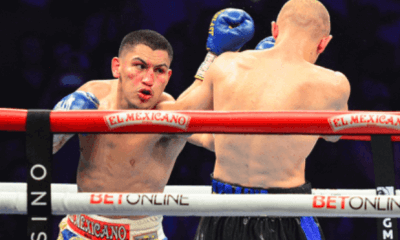
 Featured Articles3 weeks ago
Featured Articles3 weeks agoThe Ortiz-Bohachuk Thriller has been named the TSS 2024 Fight of The Year
-
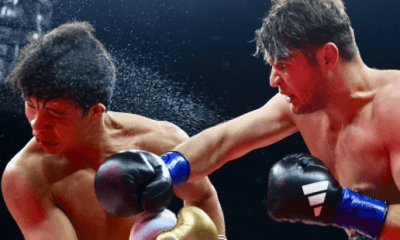
 Featured Articles4 weeks ago
Featured Articles4 weeks agoA Shocker in Tijuana: Bruno Surace KOs Jaime Munguia !!
-

 Featured Articles2 weeks ago
Featured Articles2 weeks agoFor Whom the Bell Tolled: 2024 Boxing Obituaries PART ONE (Jan.-June)
-
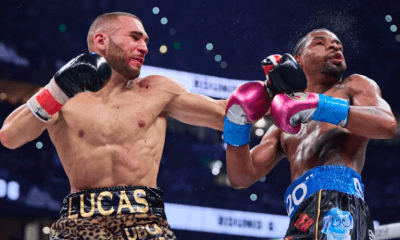
 Featured Articles3 weeks ago
Featured Articles3 weeks agoLucas Bahdi Forged the TSS 2024 Knockout of the Year
-
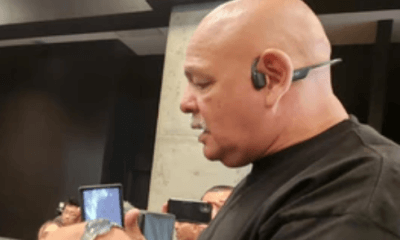
 Featured Articles4 weeks ago
Featured Articles4 weeks agoL.A.’s Rudy Hernandez is the 2024 TSS Trainer of the Year
-
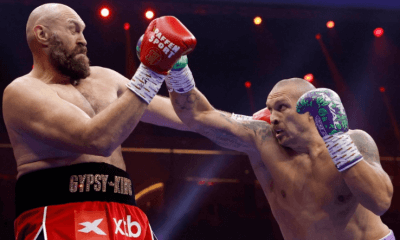
 Featured Articles3 weeks ago
Featured Articles3 weeks agoUsyk Outpoints Fury and Itauma has the “Wow Factor” in Riyadh
-
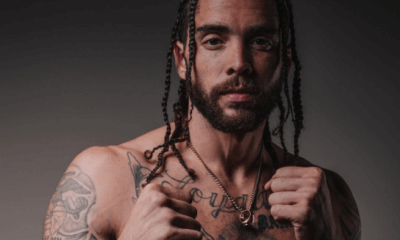
 Featured Articles5 days ago
Featured Articles5 days agoR.I.P. Paul Bamba (1989-2024): The Story Behind the Story
-

 Featured Articles2 weeks ago
Featured Articles2 weeks agoOleksandr Usyk is the TSS 2024 Fighter of the Year

